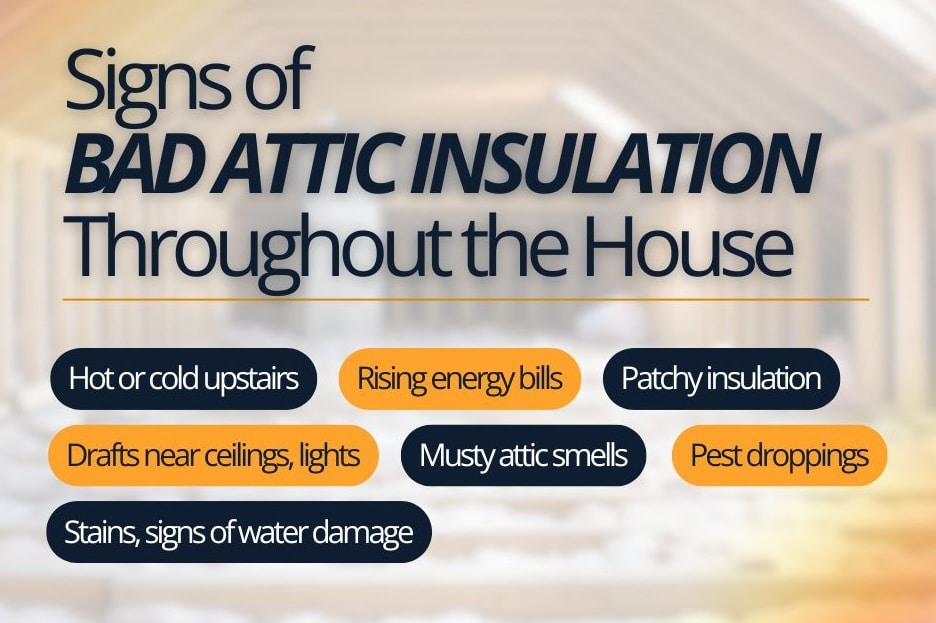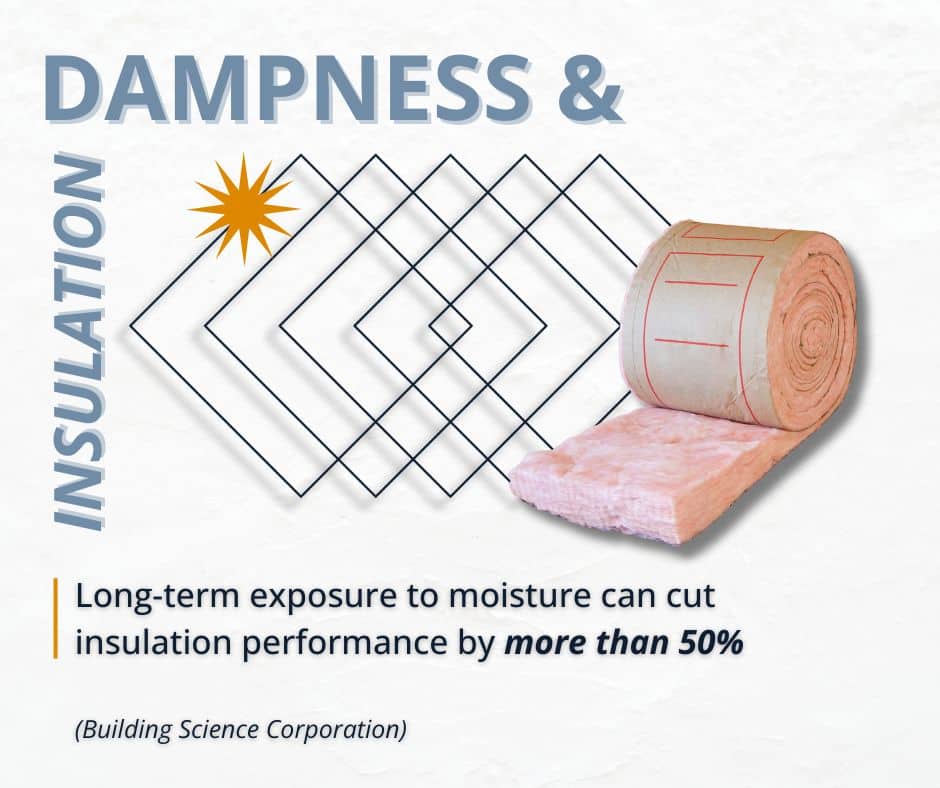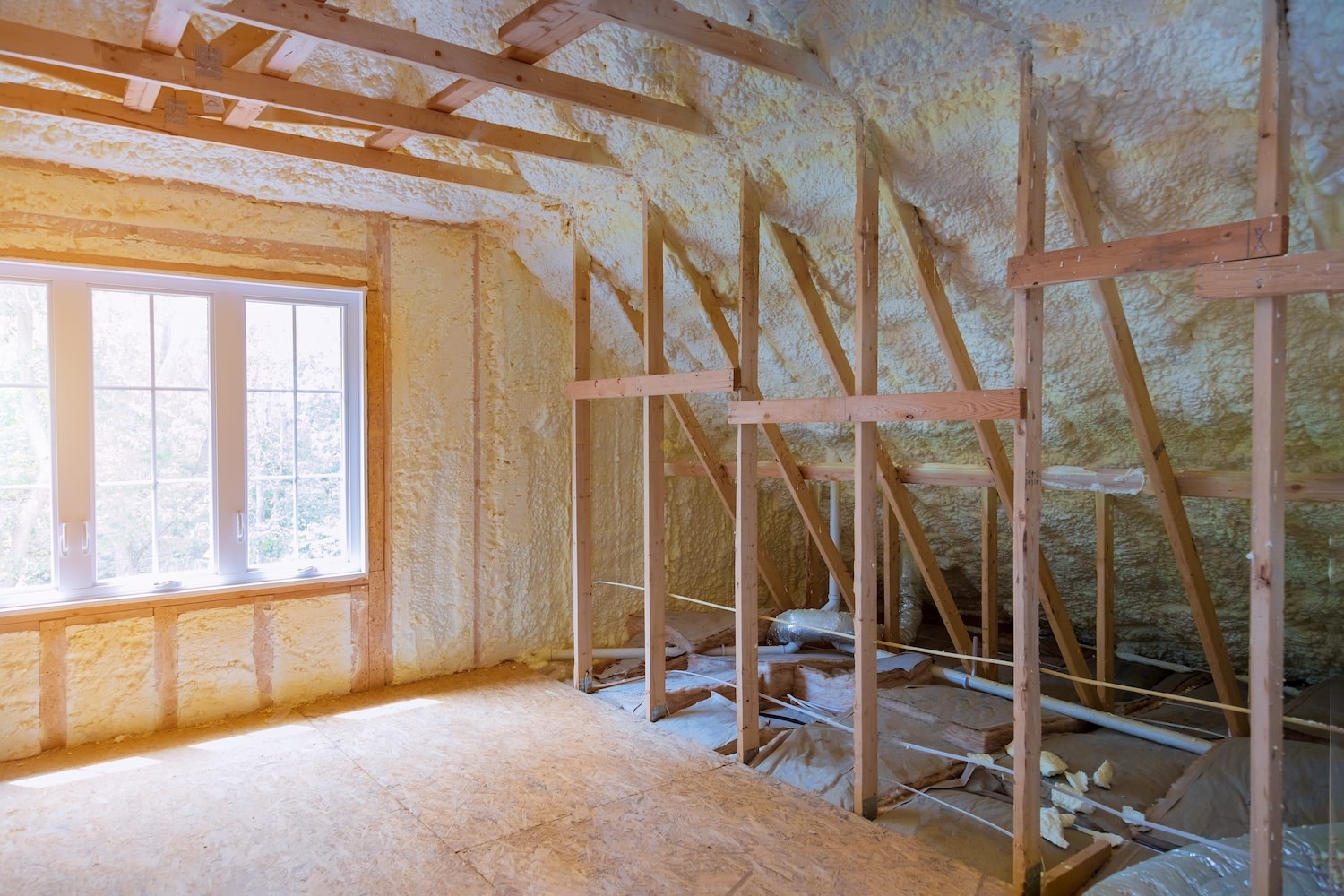Insulation in an attic plays a bigger role in your home’s comfort and condition than most people realize. It helps regulate temperature, keeps moisture in check, and improves energy efficiency. But when insulation wears down, gets wet, or isn’t installed properly, it can quietly lead to higher bills, hidden damage, and indoor air quality concerns.
If you’re a homeowner in Naperville or nearby, especially in an older or multi-level home, you may not know what’s going on above your ceiling until the symptoms show up downstairs.
Below are several key signs that the insulation in your attic may not be doing its job, along with insight into what those signs could mean for your home.
1. Your Upstairs is Hard to Keep Comfortable
If your upper floors are always hotter in the summer and colder in the winter, insulation may be to blame. Without a proper thermal barrier, heat moves easily between the attic and the living space.
This is especially noticeable in homes with older or uneven insulation. According to the U.S. Department of Energy, nearly 90% of U.S. homes are under-insulated, meaning they don’t meet modern performance standards for energy efficiency. That gap often starts in the attic.

2. Your Energy Bills Increase Without a Clear Reason
If your utility costs have crept up but your usage habits haven’t changed, attic heat loss or gain could be the cause.
Heating and cooling make up the bulk of energy use in most homes: around 50% to 70%, depending on the season.
In a cold winter or hot Midwestern summer, even small insulation gaps can lead to major energy loss. Over time, that adds up in your monthly bill. If your attic hasn’t been evaluated in years, especially in a pre-2000s home, it may be underperforming.
3. You Can See Visible Gaps or Settling in the Attic
Insulation should fully cover the attic floor without gaps or dips. If you peek into your attic and see wood framing, uneven coverage, or areas that look sunken or dusty, that’s a sign of settling or age.
Blown-in insulation, often used in Illinois homes, can compact or shift over time. Once insulation settles, it loses its R-value, which is the measure of thermal resistance.
The EPA recommends attic insulation levels of R-38 to R-60 for homes in northern Illinois, depending on the home’s heating system. Older insulation rarely meets those numbers unless it has been upgraded.
4. You Feel Drafts or Cold Spots in Upstairs Rooms
Drafts in winter aren’t always caused by windows. Air leaks through unsealed attic hatches, light fixtures, or gaps around plumbing stacks can allow outdoor air into the home and heated air to escape into the attic.
These leaks often go hand-in-hand with insufficient insulation. The result is rooms that are hard to heat or cool and a home that feels less comfortable overall.
Unsealed attic bypasses are one of the top issues flagged during insulation inspections and energy audits.
5. You Notice Musty Odors or Moisture in the Attic
Moisture in the attic can destroy insulation from the inside out. It causes insulation to flatten, reduces its ability to block heat, and creates the perfect environment for mold.
According to Energy Star, wet insulation not only loses performance, it can also spread moisture to surrounding materials like roof decking or framing.
Musty smells, visible staining, or condensation on roofing nails or sheathing may indicate poor attic ventilation or a bathroom fan venting into the attic. These issues often go unnoticed until mold begins to spread or indoor air quality drops.
6. You Find Evidence of Pests
Attics are common nesting spots for pests. Rodents burrow into insulation to build nests, and they often chew through nearby wiring, creating safety risks.
If you find shredded insulation, droppings, or tunnels through the material, it’s likely compromised and no longer doing its job.
The National Pest Management Association reports that rodent infestations spike in fall and winter, especially in attics and basements. Pest-damaged insulation may need full replacement depending on the extent of contamination.
7. You See Signs of Past Roof Leaks or Water Damage
Even a small leak in the roof can soak nearby insulation. And once that insulation is wet, it often becomes compacted and mold-prone.
Look for dark or discolored patches in the attic, especially near chimneys, vents, and roof valleys. Even if the source of the leak has been repaired, the insulation may still be damp or permanently damaged.
Long-term exposure to moisture can cut insulation performance by more than 50%, according to Building Science Corporation, and it often goes unchecked for years in unused attic spaces.

Other Maintenance Tasks to Tackle Now
If you’re already in the attic or working with an inspector, it’s a good time to:
- Confirm that all vents (soffit, ridge, gable) are clear of blockages
- Look for daylight at roof edges or penetrations that may allow air or pests in
- Ensure bathroom or dryer exhaust fans vent outdoors, not into the attic
- Reseal attic access doors and recessed light fixtures to limit air leaks
- Remove stored items that may be compressing insulation or blocking airflow
These steps help improve insulation performance and prevent future issues.
When to Call a Professional
If you’ve noticed signs like musty odors, cold rooms, pest damage, or visible gaps in insulation, it’s worth bringing in a qualified inspector.
Prospective Home Inspections offers full maintenance and pre-listing inspections throughout Naperville and surrounding areas. Our team checks the insulation in an attic as part of a whole-home evaluation, looking at ventilation, structural integrity, moisture conditions, and more.
These inspections help homeowners understand whether insulation is still effective, or if it’s contributing to larger issues like heat loss, moisture buildup, or mold development.
Conclusion
Attic insulation might be out of sight, but it’s never out of the picture. When insulation in an attic starts to fail, it affects how your home feels, how much it costs to run, and how healthy the air inside really is.
If you’ve spotted any of the signs in this list, or just haven’t had your attic inspected in years, Prospective Home Inspections can help.
Schedule an inspection today and get a clear picture of your home’s condition to plan for the future.


